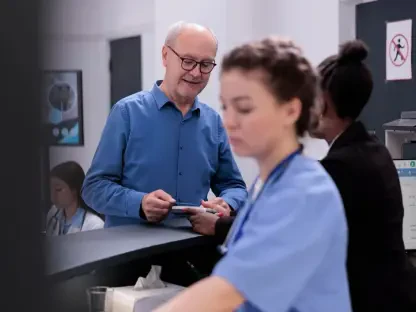The emergence of virtual physical therapy solutions has opened new avenues for addressing musculoskeletal (MSK) conditions, significantly improving clinical outcomes and cutting healthcare costs. According to an independent evaluation by the Peterson Health Technology Institute (PHTI), these innovative virtual options could serve as effective alternatives to traditional, in-person therapy. MSK disorders, affecting almost one-third of Americans, are a leading cause of disability, contributing to nearly 10% of healthcare expenses. These conditions often impair daily activities, lower productivity levels, and amplify mental health issues. Consequently, the potential for virtual solutions to address these challenges has sparked considerable interest in the healthcare community.
Diverse Virtual Solutions for MSK Treatment
PHTI’s comprehensive analysis delved into eight virtual MSK therapy solutions, categorizing them into three distinct groups. These categories include app-based exercise therapies with minimal physical therapist involvement, physical therapist-guided solutions replacing in-person therapy, and technology that complements in-person sessions, labeled as remote therapeutic monitoring (RTM). Patients use body-worn motion trackers or camera systems within these solutions to guide exercises and receive tailored feedback. The companies involved in providing these advanced technologies include DarioHealth, Hinge Health, Kaia Health, Limber Health, Omada Health, RecoveryOne, Sword Health, and Vori Health. Through this extensive evaluation, PHTI aimed to determine the real-world applications and benefits of virtual physical therapy options.
Licensed physical therapists, clinical advisors, MSK patients, and other key stakeholders contributed significantly to the evaluation. Their input revealed that physical therapist-guided solutions, in particular, offer remarkable promise. These solutions matched the outcomes of traditional in-person therapies while maintaining reduced costs, making them an attractive alternative for numerous MSK conditions. For instance, if only 25% of in-person therapy users with low back pain transitioned to these virtual platforms, the potential annual savings stood at an impressive $4.4 million per million people holding commercial insurance. This notable potential for cost savings alongside high-quality therapeutic outcomes underscores the pivotal role of virtual MSK treatment options.
Evaluating App-Based and RTM-Augmented Therapies
Although app-based exercise therapies contribute to pain reduction and functional enhancement, they do not entirely replace in-person therapy sessions. Instead, they prove valuable for patients with lower-acuity conditions. The financial impact of these therapies fluctuates depending on pricing models. These app-based solutions are beneficial but may not deliver the comprehensive care necessary for complex cases. On the other hand, RTM-augmented solutions integrate remote monitoring technology with in-person physical therapy, presenting the potential for improved clinical outcomes compared to therapy sessions alone.
Despite their health benefits, RTM-augmented solutions might increase overall healthcare spending because of higher billing rates associated with remote therapeutic monitoring. While they enhance patient engagement and therapy effectiveness, the heightened costs pose a challenge to their wider adoption. This dual nature, blending promising clinical outcomes with consequential cost considerations, highlights both opportunities and hurdles in the journey toward more widespread utilization of RTM-augmented solutions.
Integrating Virtual MSK Solutions into Standard Medical Care
The advent of virtual physical therapy solutions has paved the way for new methods to tackle musculoskeletal (MSK) conditions, leading to better clinical outcomes and reducing healthcare costs. According to an independent assessment by the Peterson Health Technology Institute (PHTI), these innovative virtual approaches can act as effective substitutes for traditional, face-to-face therapy. MSK disorders, which impact nearly a third of Americans, rank as a major cause of disability and account for about 10% of healthcare expenses. These conditions often hinder daily activities, diminish productivity, and exacerbate mental health issues. Therefore, the healthcare community has shown significant interest in the potential of virtual solutions to address these challenges. This shift towards virtual therapy represents a promising development in the management of MSK disorders, offering both convenience and effectiveness. The increased accessibility and lower costs associated with virtual therapy further underscore its potential as a game-changer in the healthcare landscape.









